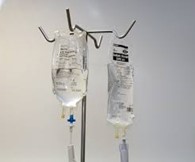A nurse is preparing to perform a physical assessment of a client's abdomen. Identify the sequence in which the nurse should perform the following steps. (Move the steps into the box on the right, placing them in the order of performance. Use all the steps.)
Percuss all four quadrants of the abdomen to measure sound quality.
Provide adequate lighting to inspect the abdomen.
Listen to the abdominal arteries using the bell of a stethoscope.
Check for areas of tenderness by pressing fingers 1.3 cm (0.5 in) into the abdomen.
Locate liver and spleen borders by pressing hands 2.5 to 7.5 cm (1 to 3 in) into the abdomen.
The Correct Answer is B, C, E, D, A
B. Provide adequate lighting to inspect the abdomen: Adequate lighting is important to ensure that the nurse can clearly see and assess the client's abdominal area. This step helps identify any visible abnormalities, such as skin changes, scars, masses, or distention.
C. Listen to the abdominal arteries using the bell of a stethoscope: Listening to the abdominal arteries helps the nurse assess blood flow and detect any abnormal vascular sounds, such as bruits or murmurs. This step provides information about vascular health and potential issues related to blood flow.
E. Locate liver and spleen borders by pressing hands 2.5 to 7.5 cm (1 to 3 in) into the abdomen: Palpating and locating the liver and spleen borders help assess the size and position of these organs. It can help identify hepatomegaly (enlarged liver) or splenomegaly (enlarged spleen), which could indicate various underlying conditions.
D.Check for areas of tenderness by pressing fingers 1.3 cm (0.5 in) into the abdomen: Palpating the abdomen for tenderness helps identify areas of discomfort or pain. It can provide information about potential inflammation, organ enlargement, or other sources of discomfort
Nursing Test Bank
Naxlex Comprehensive Predictor Exams
Related Questions
Correct Answer is C
Explanation
Choice A reason:
Documenting the fluid infusion in the client's chart: While documenting the fluid infusion is important, assessing the client's vital signs should take priority to ensure their immediate safety and well-being.
Choice B reason:
Completing an incident report is incorrect Completing an incident report is a necessary step to document the error and initiate appropriate follow-up actions, but it should come after assessing the client's condition.
Choice C reason
Obtaining the client's vital signs is the correct answer. The correct first action for the nurse to take in this situation is to obtain the client's vital signs. Administering an excessive amount of IV fluid could potentially have adverse effects on the client's cardiovascular system, including fluid overload, electrolyte imbalances, and changes in blood pressure. Monitoring the client's vital signs will help assess their current condition and any potential complications resulting from the excess fluid administration.
Choice D reason
Reporting the incident to the unit manager is incorrect. Reporting the incident to the unit manager is important for organizational awareness and accountability, but the nurse's first responsibility is to assess the client's vital signs and address any potential complications.

Correct Answer is C
Explanation
Choice A reason:
Palpation can help assess for tenderness, rigidity, or masses in the abdomen, which might indicate infection, bleeding, or other complications. However, palpation could potentially worsen a condition such as an evisceration or dehiscence, or cause additional pain. Therefore, palpation should be done only after the visual inspection and with great caution in the presence of severe pain.
Choice B reason:
Percussion is useful for assessing the presence of gas, fluid, or solid masses in the abdomen. Resonance might indicate normal air-filled intestines, while dullness could suggest fluid or mass. However, percussion is not the first action in an acute setting of sudden severe pain because it does not provide immediate information that could be life-saving. It is a later step in the physical examination.
Choice C reason:
Visual inspection is the first step because it can quickly reveal critical signs such as swelling, distention, redness, or evidence of wound complications like dehiscence or evisceration. Identifying these signs early allows for rapid intervention, which could be life-saving. This is why exposing and inspecting the abdomen is the priority in the context of sudden severe pain following surgery.
Choice D reason:
Listening for bowel sounds can provide information about the function of the gastrointestinal system. Absence of bowel sounds might suggest a paralytic ileus, while hyperactive sounds could indicate a bowel obstruction. However, in the context of sudden, severe abdominal pain postoperatively, auscultation is not the first priority.
Whether you are a student looking to ace your exams or a practicing nurse seeking to enhance your expertise , our nursing education contents will empower you with the confidence and competence to make a difference in the lives of patients and become a respected leader in the healthcare field.
Visit Naxlex, invest in your future and unlock endless possibilities with our unparalleled nursing education contents today
Report Wrong Answer on the Current Question
Do you disagree with the answer? If yes, what is your expected answer? Explain.
Kindly be descriptive with the issue you are facing.
